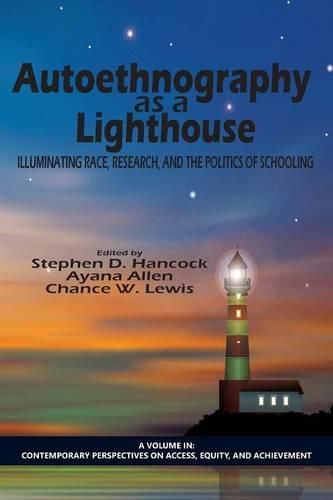Readings Newsletter
Become a Readings Member to make your shopping experience even easier.
Sign in or sign up for free!
You’re not far away from qualifying for FREE standard shipping within Australia
You’ve qualified for FREE standard shipping within Australia
The cart is loading…






This title is printed to order. This book may have been self-published. If so, we cannot guarantee the quality of the content. In the main most books will have gone through the editing process however some may not. We therefore suggest that you be aware of this before ordering this book. If in doubt check either the author or publisher’s details as we are unable to accept any returns unless they are faulty. Please contact us if you have any questions.
The purposes of this book are rooted in the move from invisibility to visibility and silence to voice. This work uses auto ethnography as an enterprise to break down traditional barriers that support the invisibility of diverse epistemologies (Altheide & Johnson,2011). The reality of invisibility and silence has plagued scholars of colour in their attempt to make known the cultural significance found in the planning and execution of research. As a result, this book purposes to support the visibility and voice of scholars of colour who conduct auto ethnographic research from a racial, gendered, and critical theoretical framework. This work further supports the research community as it examines and re-examines culturally indigenous epistemologies as a viable vehicle for rigorous and authentic inquiry (Dillard, 2000).
The significance of this book can be grafted from its attention to new ways of thinking about doing research. While much of the previous scholarship on auto ethnography highlights the importance of personal narrative and voice, this book includes the latter but also examines the concept of race and culture as undisputable factors in the doing of research. Burdell & Swadener (1999) contends that auto ethnography should interrogate the subjective nature and question master narratives and empirical assumptions. Spry (2011) emphasizes auto ethnography as a moral discourse that foster intimate experiences grounded in historical processes. Authoethnographic research then, has the potential to provide a lens by which researchers can delve into research with a greater sense of personal experiences and critical understanding of the inquiry context.
$9.00 standard shipping within Australia
FREE standard shipping within Australia for orders over $100.00
Express & International shipping calculated at checkout
This title is printed to order. This book may have been self-published. If so, we cannot guarantee the quality of the content. In the main most books will have gone through the editing process however some may not. We therefore suggest that you be aware of this before ordering this book. If in doubt check either the author or publisher’s details as we are unable to accept any returns unless they are faulty. Please contact us if you have any questions.
The purposes of this book are rooted in the move from invisibility to visibility and silence to voice. This work uses auto ethnography as an enterprise to break down traditional barriers that support the invisibility of diverse epistemologies (Altheide & Johnson,2011). The reality of invisibility and silence has plagued scholars of colour in their attempt to make known the cultural significance found in the planning and execution of research. As a result, this book purposes to support the visibility and voice of scholars of colour who conduct auto ethnographic research from a racial, gendered, and critical theoretical framework. This work further supports the research community as it examines and re-examines culturally indigenous epistemologies as a viable vehicle for rigorous and authentic inquiry (Dillard, 2000).
The significance of this book can be grafted from its attention to new ways of thinking about doing research. While much of the previous scholarship on auto ethnography highlights the importance of personal narrative and voice, this book includes the latter but also examines the concept of race and culture as undisputable factors in the doing of research. Burdell & Swadener (1999) contends that auto ethnography should interrogate the subjective nature and question master narratives and empirical assumptions. Spry (2011) emphasizes auto ethnography as a moral discourse that foster intimate experiences grounded in historical processes. Authoethnographic research then, has the potential to provide a lens by which researchers can delve into research with a greater sense of personal experiences and critical understanding of the inquiry context.